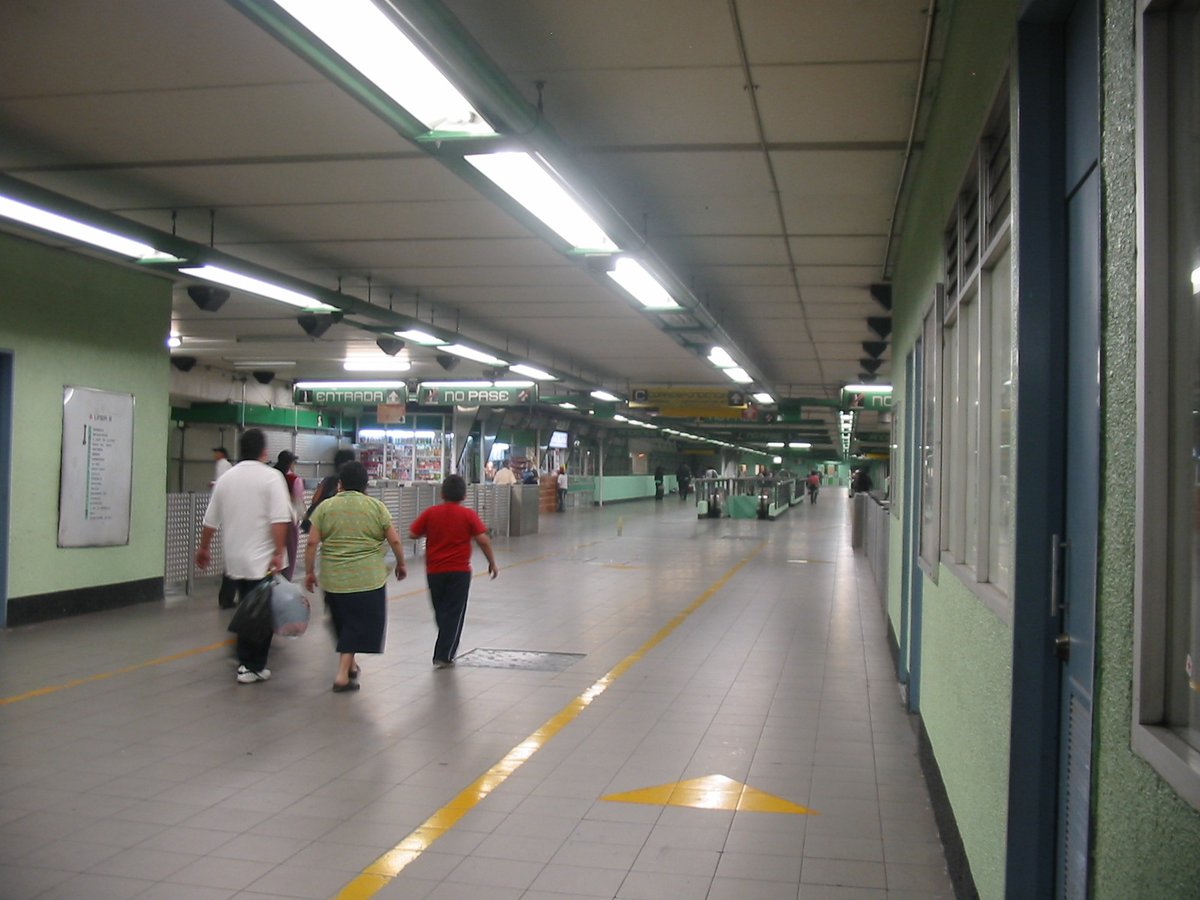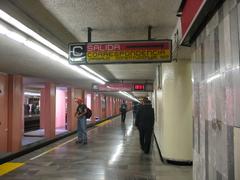
Visiting Salto del Agua: Hours, Tickets, and Historical Insights for Mexico City’s Iconic Fountain
Date: 14/06/2025
Introduction
Salto del Agua, located at the crossroads of Mexico City’s Centro Histórico, is more than just a striking baroque fountain—it is a living testament to the city’s layered past. Once the grand terminus of the Chapultepec Aqueduct, this site played a crucial role in the colonial city’s water supply and remains a social and architectural landmark to this day. Whether you’re a history enthusiast, architecture lover, or a traveler eager to explore Mexico City’s rich urban tapestry, Salto del Agua offers an immersive experience that connects colonial heritage with modern life.
This comprehensive guide covers everything you need to know about Salto del Agua: its history, visiting hours, ticket and accessibility details, travel tips, nearby attractions, and answers to frequently asked questions. For official updates and in-depth resources, see the Mexico City Tourism Official Site and the Museo Nacional del Virreinato.
Table of Contents
- Historical Background
- Architectural Features and Symbolism
- Urban Significance and Evolution
- Location and Access
- Visiting Hours and Tickets
- Accessibility and Getting There
- Nearby Attractions
- Visitor Tips
- Frequently Asked Questions (FAQ)
- Preservation and Legacy
- Conclusion
- References
Historical Background
Colonial Origins and Construction
Salto del Agua’s fountain was built in 1779 under Viceroy Antonio María de Bucareli, designed by Ignacio Castera in a baroque style that blended Spanish and indigenous influences. Its elaborate stonework marked the end point of the Chapultepec Aqueduct, a marvel of colonial engineering that once supplied fresh water to the growing metropolis (godinchilango.mx).
The Chapultepec Aqueduct
The aqueduct, with over 900 arches, brought water from the springs of Chapultepec to the city center. At Salto del Agua, residents gathered daily to fill their water jugs, and the site became a hub of social, commercial, and political life (godinchilango.mx).
Architectural Features and Symbolism
The fountain’s design is a striking example of late colonial baroque, featuring salomonic (spiral) columns, cantera (volcanic stone) dolphins, a marine-themed basin, and an eagle clutching the city’s coat of arms—a symbol of Mexico’s syncretic Spanish and indigenous heritage. Original inscriptions from the 18th century remain, linking visitors to the era of its construction (godinchilango.mx).
Across the avenue stands the Capilla de la Inmaculada Concepción del Salto del Agua, an 18th-century baroque chapel designed by Francisco Navarijo and preserved amidst modern urban development (mexicocity.cdmx.gob.mx).
Urban Significance and Evolution
By the 20th century, the fountain’s role as a water supply diminished with modern infrastructure. The original structure suffered damage and was replaced by a faithful replica in 1948, with the original now preserved at the Museo Nacional del Virreinato in Tepotzotlán (godinchilango.mx). Today, Salto del Agua’s fountain and metro station serve as vital urban landmarks, connecting past and present (reddit.com).
Location and Access
Salto del Agua sits at Av. Arcos de Belén S/N, Colonia Centro/Doctores, at the southern edge of Mexico City’s Centro Histórico (godinchilango.mx). The Salto del Agua Metro Station (Lines 1 and 8) provides direct access. The area is bustling and walkable, with many attractions within a short distance (mexicodesconocido.com.mx).
Visiting Hours and Tickets
- Fountain and Chapel: Open public spaces accessible 24/7; visiting between 8:00 AM and 7:00 PM is recommended for safety and optimal experience.
- Admission: Free—no tickets required for the fountain or chapel.
- Metro Station: Operates 5:00 AM–12:00 AM on weekdays, 6:00 AM–12:00 AM Saturdays, 7:00 AM–12:00 AM Sundays/holidays (Metro CDMX).
- Metro Fare: 5 pesos per ride; purchase at station booths or vending machines with a rechargeable card.
Accessibility and Getting There
- Metro: Lines 1 (Pink) and 8 (Green) stop at Salto del Agua. Exits directly face the fountain and chapel.
- Bus: Several local bus routes serve Eje Central.
- Taxi/Rideshare: Available citywide; parking is limited, so public transport is advised.
- Mobility: The area is mostly flat and paved, with ramps and elevators at the metro station. Some sidewalks may be uneven but are generally accessible.
Nearby Attractions
- Mercado San Juan – Arcos de Belén: A renowned market just steps away, famed for fresh produce and local food (mexicocity.cdmx.gob.mx).
- Remnants of Chapultepec Aqueduct: Surviving arches can be seen at Avenida Chapultepec and Florencia.
- Centro Histórico: Home to museums, colonial churches, vibrant markets, and walking tours.
- Capilla de Salto del Agua: 18th-century chapel opposite the fountain.
Visitor Tips
- When to Visit: Mornings and late afternoons provide the best lighting and fewer crowds.
- Weather: June brings sunny mornings and occasional afternoon showers; bring a light jacket and umbrella (letstraveltomexico.com).
- Safety: Centro Histórico is generally safe, but stay aware, secure valuables, and avoid isolated areas at night (travelmexicosolo.com).
- Health: Altitude is 2,240 m (7,350 ft); stay hydrated and take it easy on your first day.
- Cash: Many vendors accept only pesos in small denominations.
- Photos and Etiquette: Photography is welcome; ask before photographing people or inside the chapel.
- Food: Sample tacos, tamales, and aguas frescas from local vendors. Drink only bottled or filtered water.
Frequently Asked Questions (FAQ)
Q: What are the visiting hours for Salto del Agua?
A: The fountain and chapel are open 24/7; best hours are 8:00 AM–7:00 PM.
Q: Is there an entrance fee or ticket required?
A: No, admission is free.
Q: Is Salto del Agua wheelchair accessible?
A: Yes, with some minor sidewalk unevenness; the metro station has elevators.
Q: Are guided tours available?
A: Yes, many Centro Histórico walking tours include Salto del Agua.
Q: Where is the original fountain?
A: The original is at the Museo Nacional del Virreinato in Tepotzotlán.
Q: What is the best way to get there?
A: Via Metro Lines 1 or 8; station exits face the fountain.
Preservation and Legacy
The installation of a replica and the safeguarding of the original fountain highlight Mexico City’s commitment to cultural preservation. Salto del Agua’s continued prominence in urban life demonstrates its enduring role as a link between the city’s colonial heritage and its modern vibrancy (reddit.com).
Conclusion
Salto del Agua is a must-see historical site in Mexico City, blending baroque artistry, indigenous symbolism, and urban vitality. Its accessibility, free admission, and central location make it an ideal starting point for exploring the Centro Histórico. For maps, tickets, and personalized travel guides, download the Audiala app, and consult the Mexico City Tourism Official Site and Museo Nacional del Virreinato for the latest updates.
Embark on your journey to Salto del Agua to experience the seamless fusion of history, architecture, and everyday life at one of the city’s most iconic landmarks.
References
- Visiting Salto del Agua: History, Tickets, Hours, and Tips for Exploring Mexico City’s Iconic Fountain, 2025, Godin Chilango (godinchilango.mx)
- Salto del Agua Metro Station: Visiting Hours, Tickets, and Historical Significance in Mexico City, 2025, Wikipedia (wikipedia.org)
- Complete Guide to Visiting Salto del Agua: Hours, Tickets, and Nearby Attractions, 2025, Mexico Desconocido (mexicodesconocido.com.mx)
- Salto Del Agua Metro Station Visiting Hours, Tickets & Nearby Historical Sites Guide, 2025, Metro de México Guide (metrodemexico.mx)
- Mexico City Tourism Official Site, 2025 (visitmexico.com)
- Museo Nacional del Virreinato, 2025 (museovirreinato.inah.gob.mx)
- Additional travel and safety tips: (letstraveltomexico.com), (travelmexicosolo.com), (travelbooksfood.com)











































































































































































